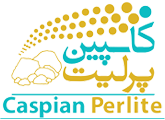Perlite filter aids are used to clarify liquids by two methods:
a) Passing the liquid through a formed filter aid layer, called precoat
b) Addition of filter aid to the liquid, called body feed
A Combination of the two methods is practiced with either vacuum or pressure filtration.
A precoat on septum approximate thickness 1,5 to 3 mm
A layer of filter aid can be applied to filter septum (cloth, paper or metal screens) which becomes the filtering layer when a slurry is pumped to the filter and the liquid is recycled. Depending upon the particle size of the filter aid selected, this layer can act either as a depth filter, utitilising the pores to retain the solids, or as a surface filter to stop the suspended solids from penetrating into the precoat layer.
When precoats are used as depth filters, a thin bed of a filter aid, sufficiently fine to stop the filterable solids on the surface, is applied to the septum. This gives sharp clarity but is limited to low suspended solid systems.
Principal applications using only precoats are in the filtration of aqueous and other low viscosity liquids, usually containing impurities of 20 ppm. or less. Filters for the home swimming pools (not large commercial pools) usually are operated in this manner. Another example is “insurance filtration” for the removal of trace amounts of particles which have entered into or have been precipitated from a filtered process liquor.
A relatively thin filter aid precoat, 1,5 to 3,0 mm, is commonly used when filter aid is also added to the liquid to be filtered. This is usually expressed in kilograms of filter aid per square meter of filter area and will be in the range of 200 to 1700 g/m² of filter area. A precoat protects the cloth septum from becoming plugged with solids, and is required when metal screens are used on filter elements. The precoat is best applied with filtered liquid, clean water or solvents, depending upon what can be tolerated. It should be applied at a slurry concentration of about of 0,3%, especially on metal screens, so that the particles bridge the screen openings. Precoating liquor should clear up within 5 to 15 minutes of recirculation.
For liquids in viscosity range of water, a precoating rate of about 40 l/m²/min. is adequate. Much lower rates can be used with higher viscosity liquids and can be as low as 4 l/m²/min. There should also be at least 0,7 kg/cm² pressure differential (tank pressure minus outlet pressure) when applying a precoat.
Ideally, the same filter aid used for body feed should be used for precoating to minimize inventories. However, this is not possible in many applications.





